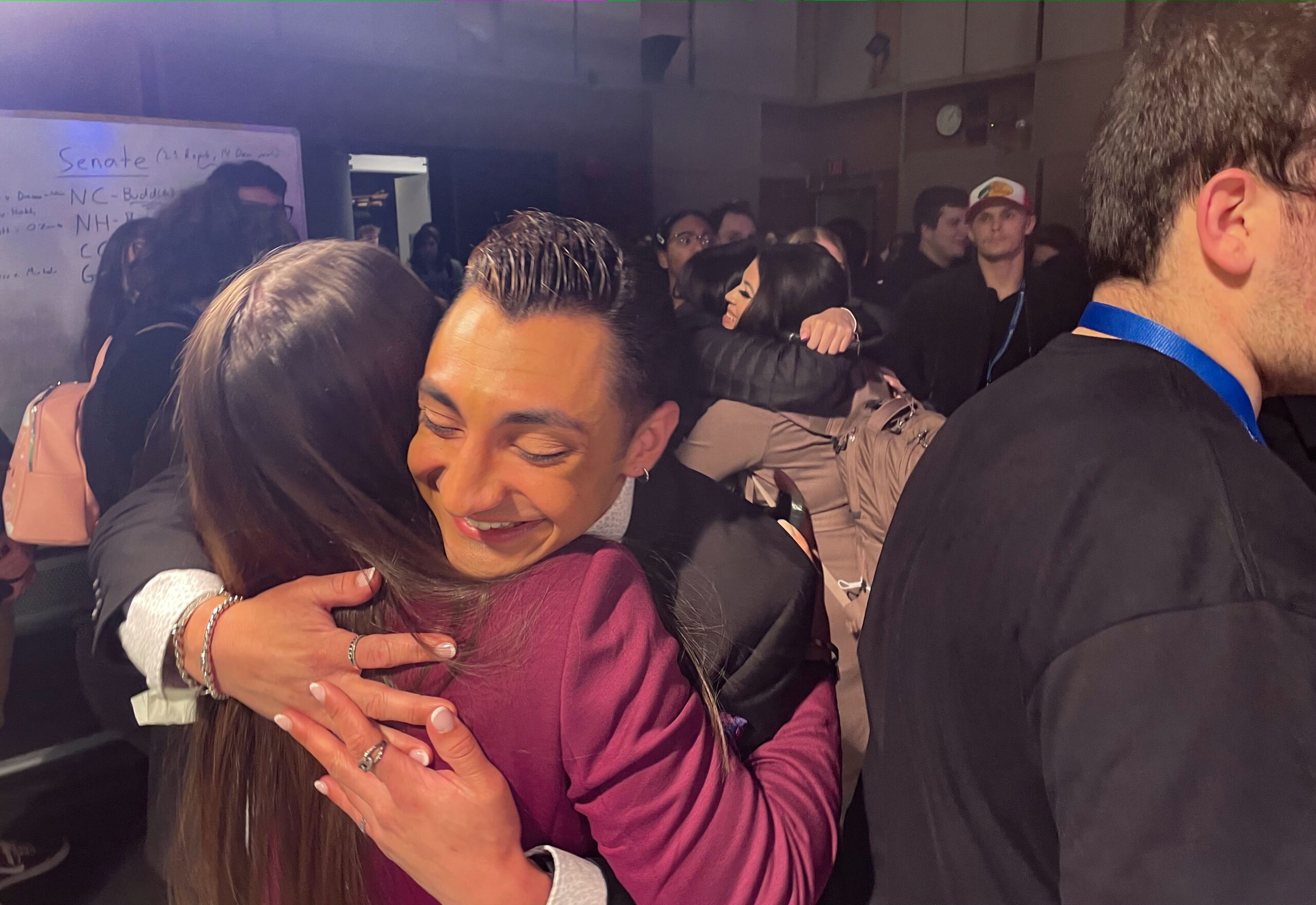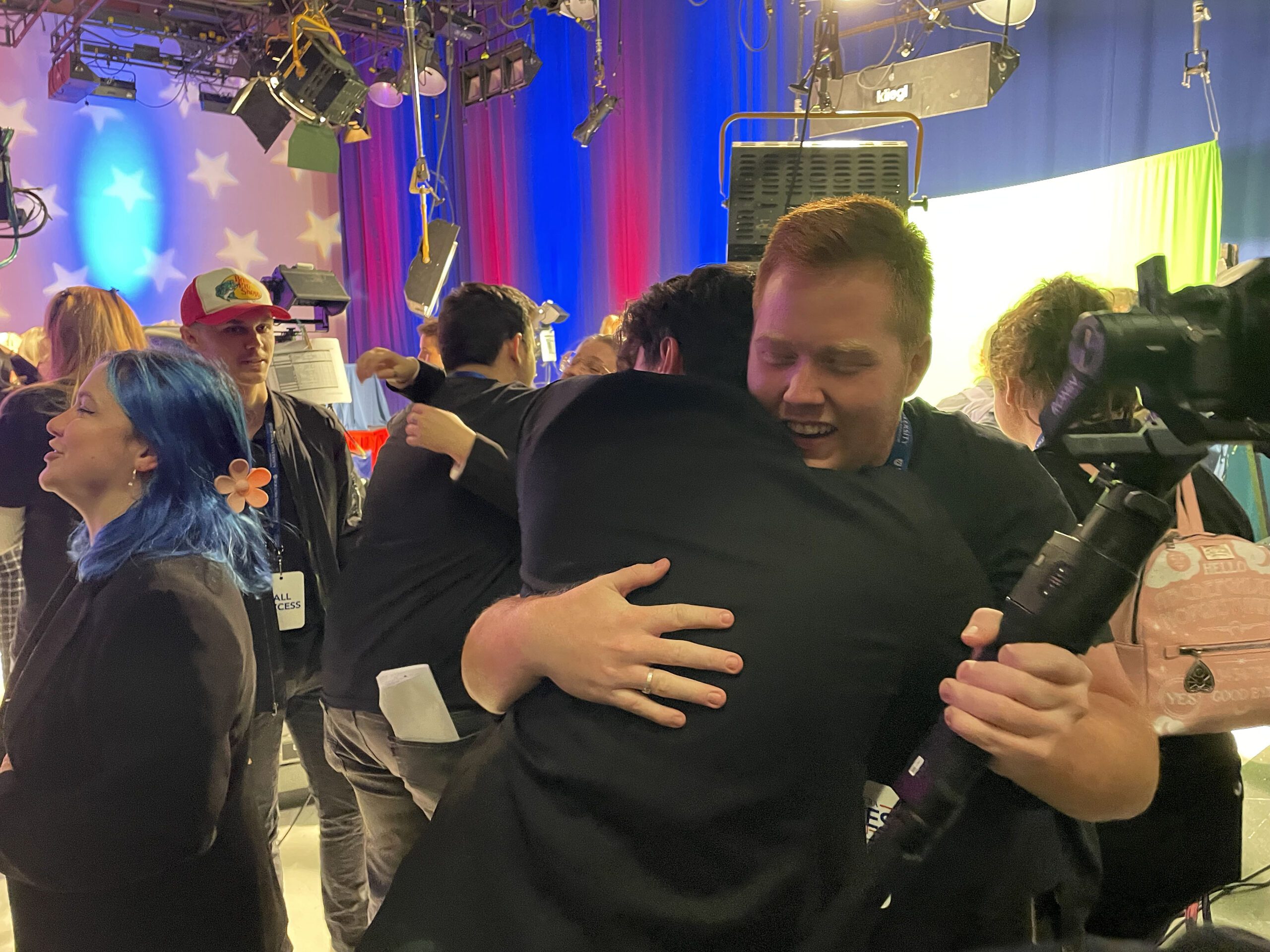Following three months of intense preparations, a team of more than 150 Hofstra University students at the Lawrence Herbert School of Communication at last had the chance to report breaking news on the air for four straight hours during Tuesday’s midterm election, updating viewers on the progress of races across the country and even calling a few of them.
The show got under way promptly at 8 p.m. Nov. 8 and wound down at midnight. This was not a simulation. Students broadcast their work on Facebook and YouTube Live, the Hofstra University Channel 32.2 (HEAT Network) and WRHU Radio 88.7 FM.
For the full four-hour broadcast, click here.
Nicole Clarity, a professor of broadcast journalism at the Herbert School, said “Hofstra Votes Live” teaches students to think — and react — fast. “One of the most important skills students learned is something you can’t teach in a classroom — how to cover breaking news,” she said. “They learned how to be unscripted, adapt to information coming in and make decisions on the fly in a moment. That’s an important skill in journalism and one that takes practice to perfect. Having this experience will put students light-years ahead of others when they enter the job market.”
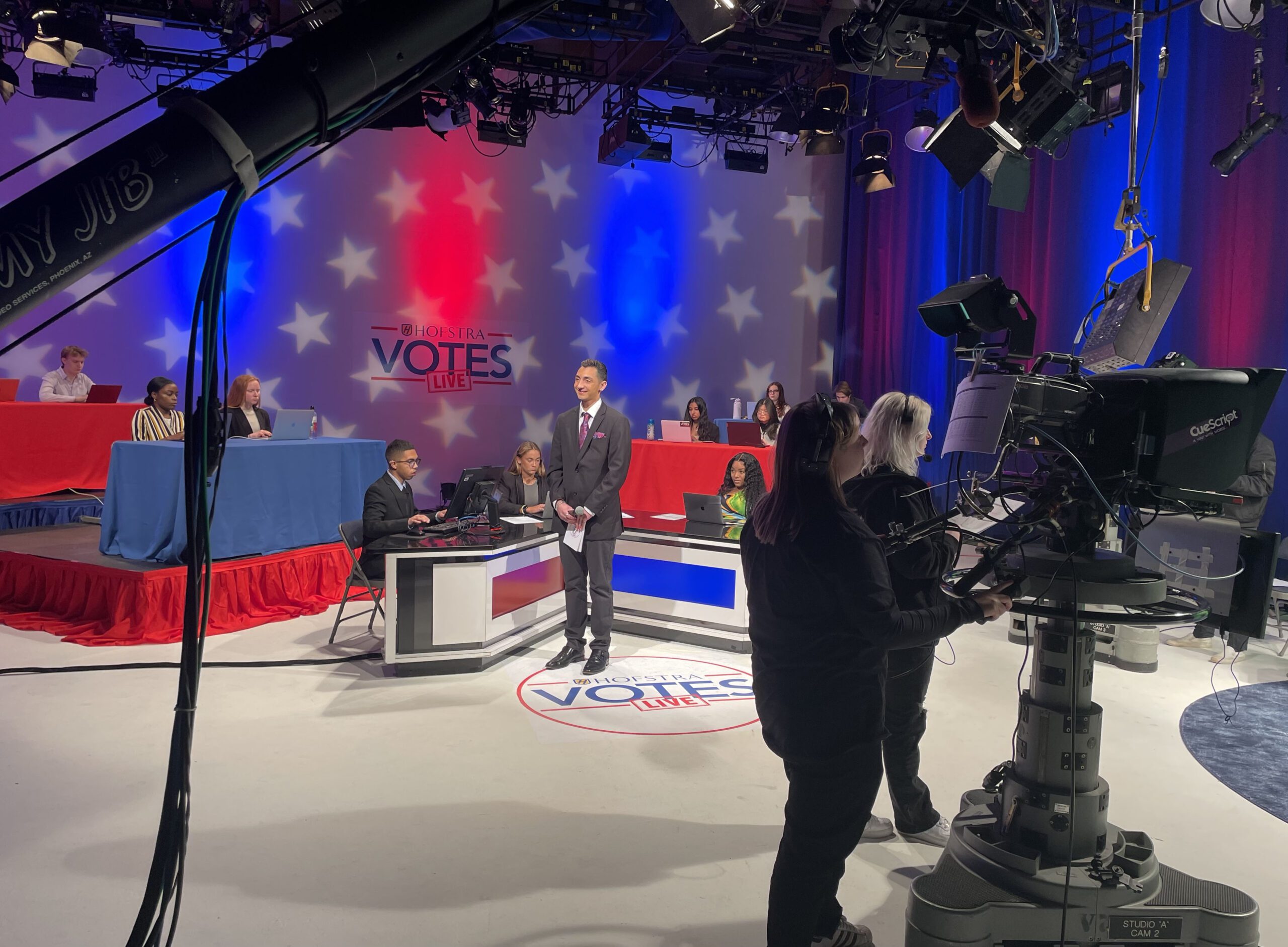
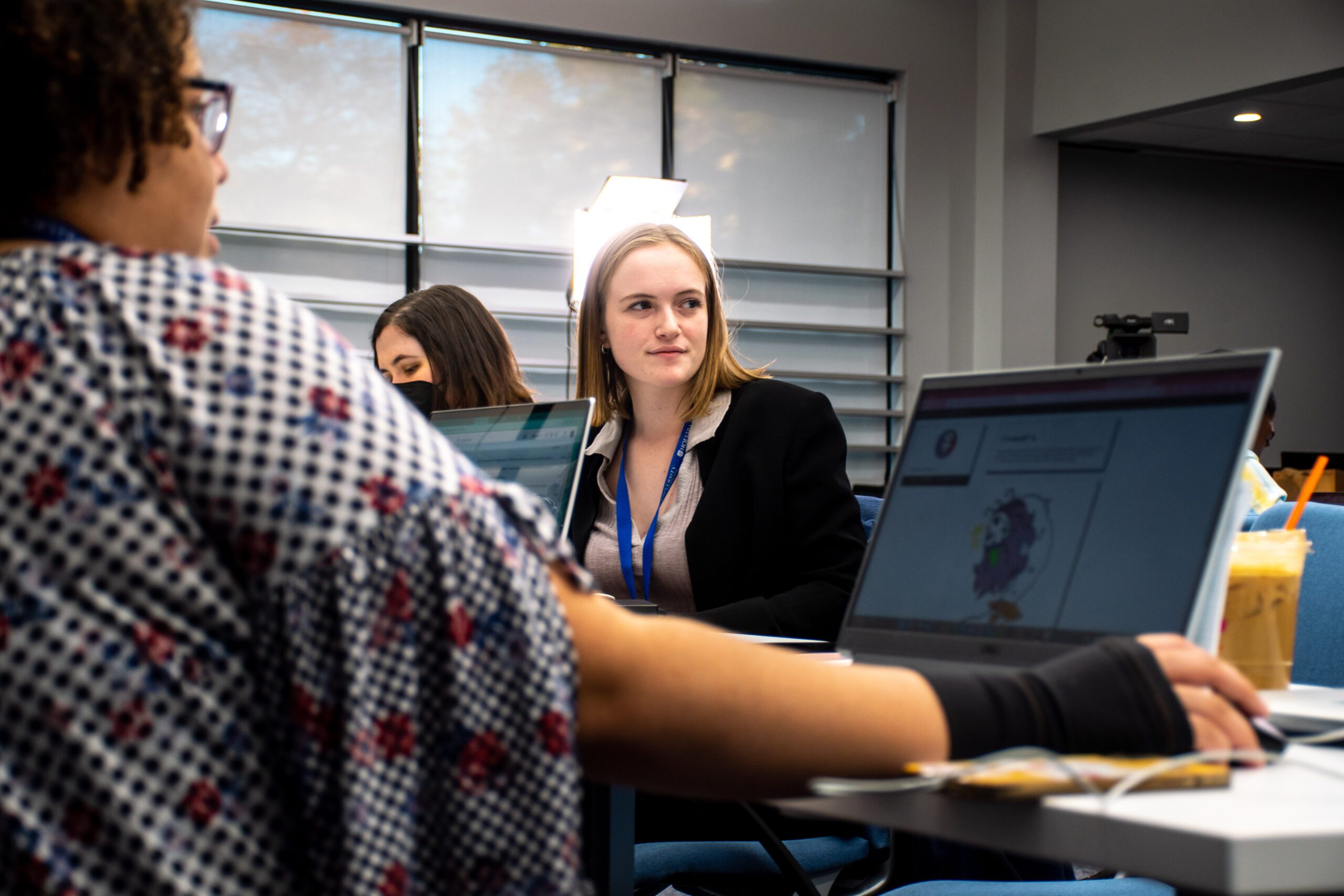

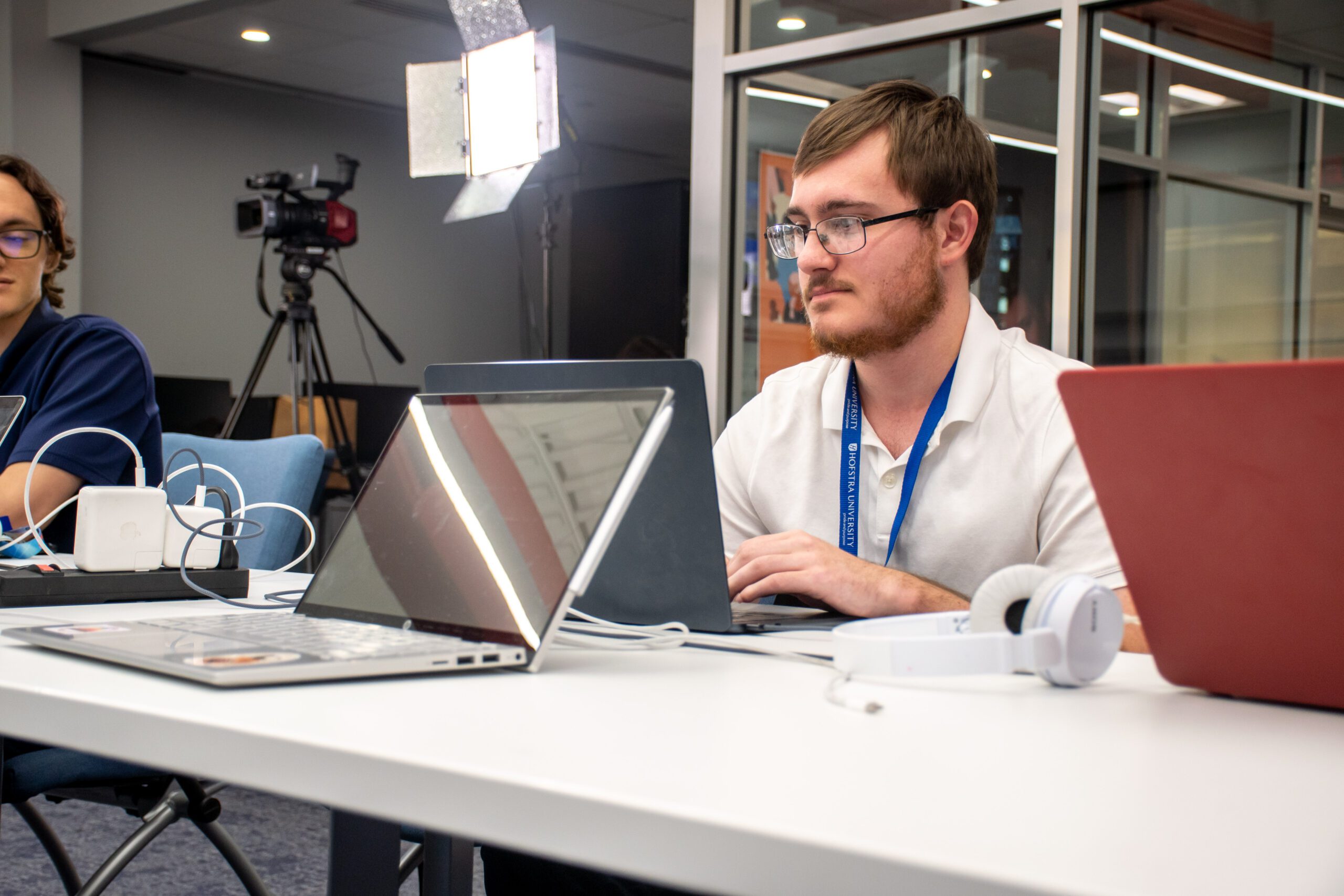
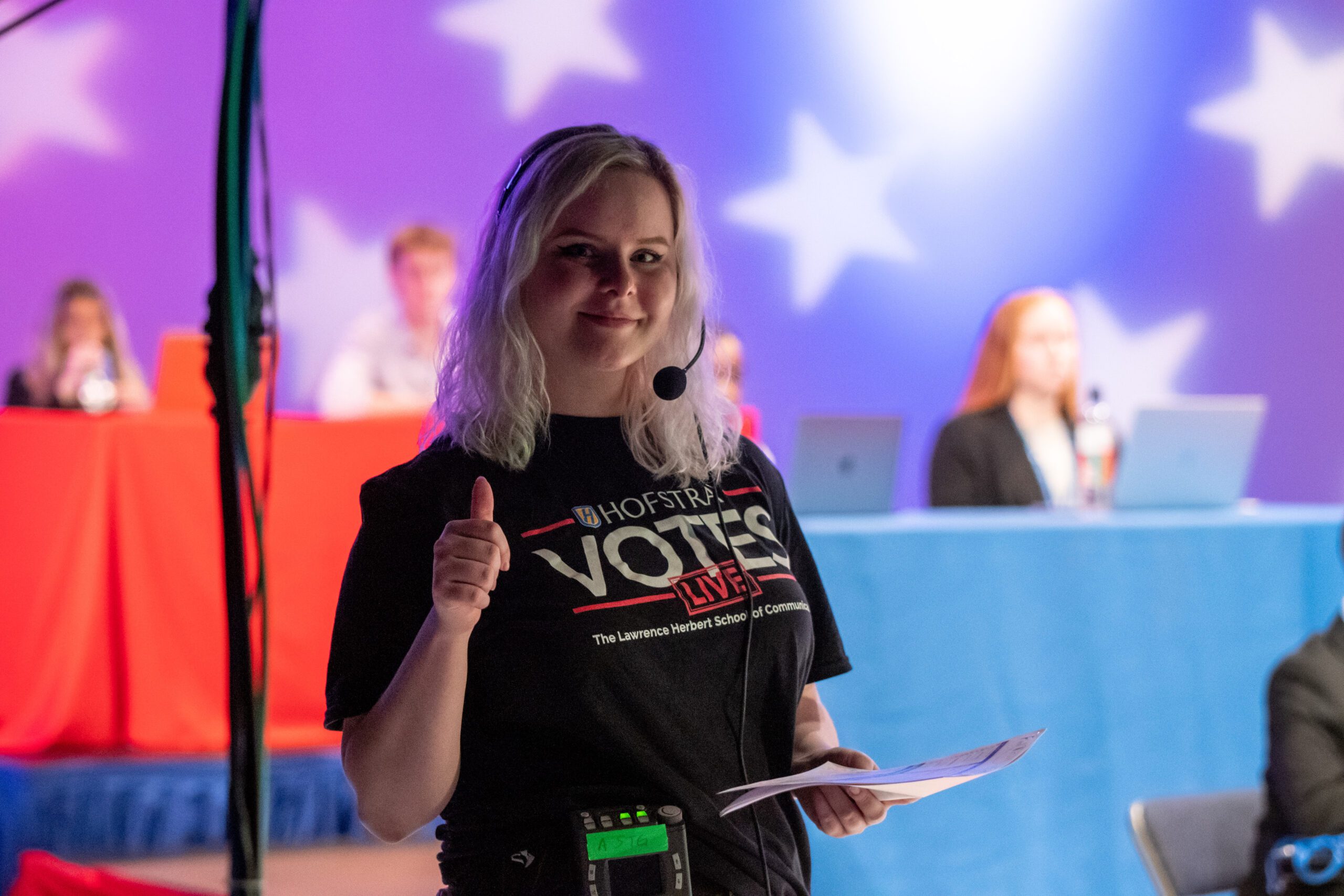
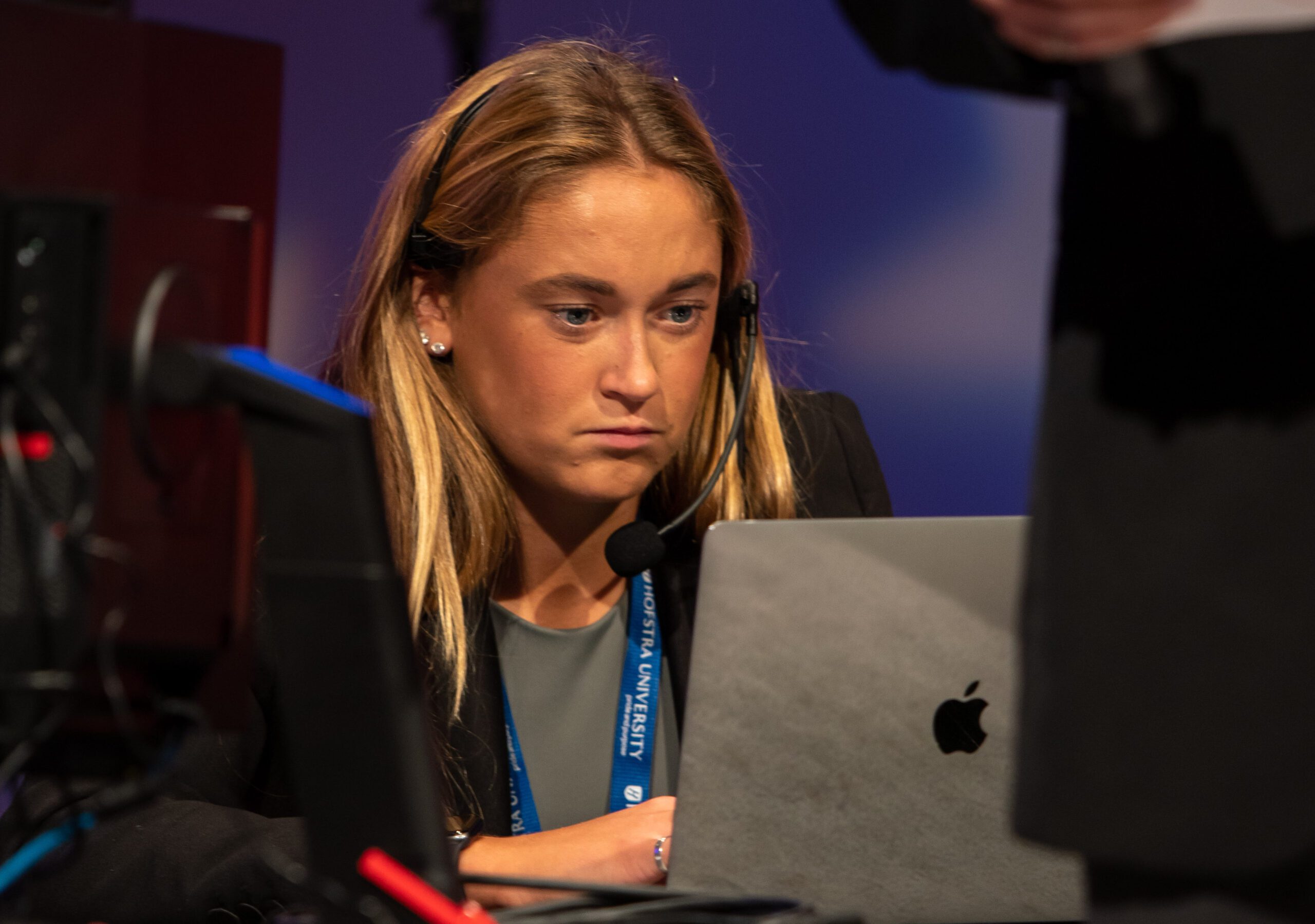
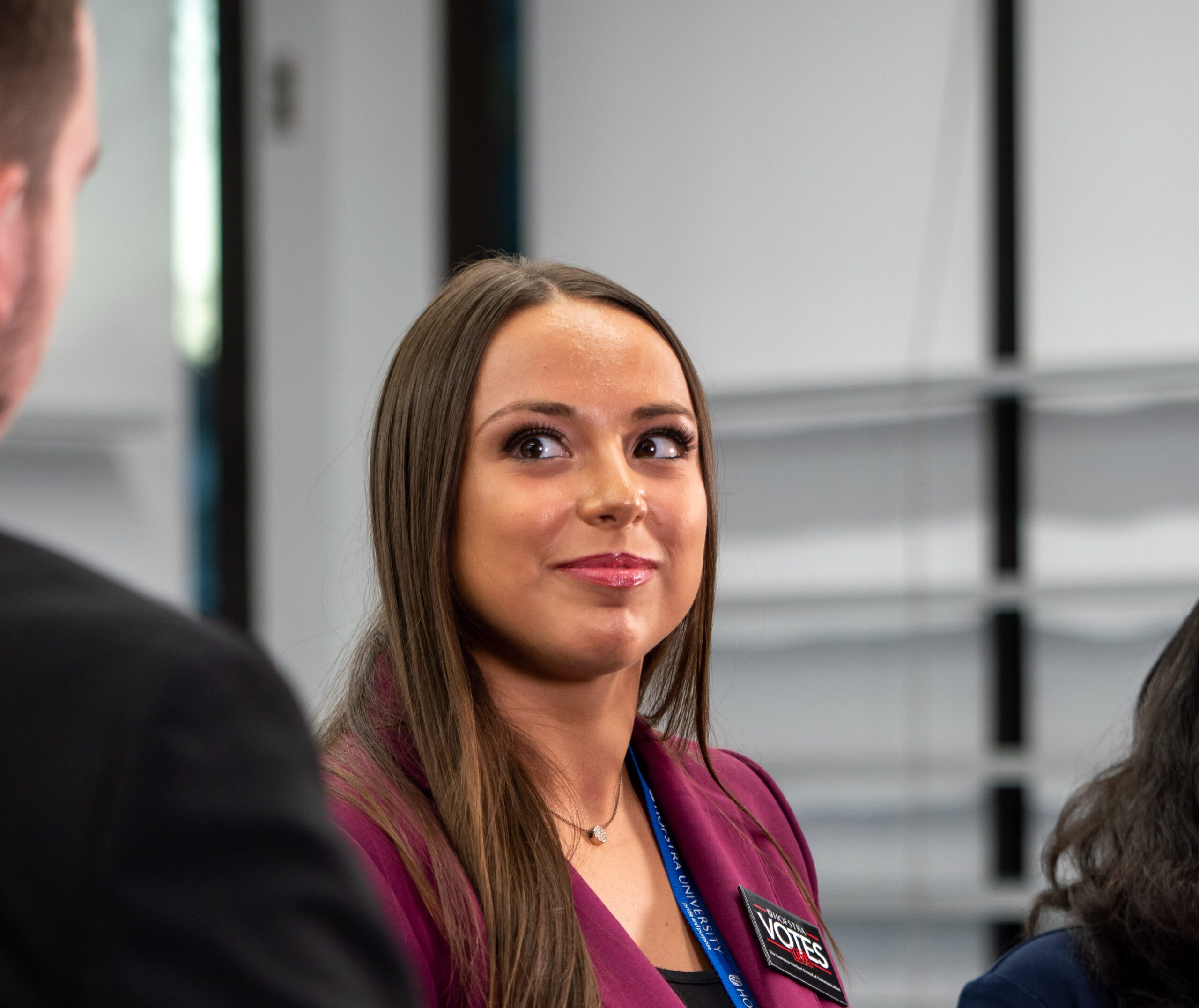
The students worked on the broadcast from August through Election Day, researching candidates to develop profiles on them, tracking polls, exploring campaign issues, creating graphics, writing scripts, learning how to operate cameras in multiple locations, shooting on-site video packages with interviews, designing and assembling sets, developing a public relations campaign and social media presence, practicing in front of the camera and memorizing lines, all with the understanding that they must be prepared for anything to happen.
Professor Randall Hillebrand, who has coordinated Hofstra’s TV program since 1990, said, “Students learned what it’s like to be part of a team of hundreds that spends tens of thousands of collective hours preparing for, rehearsing and eventually broadcasting live the results of our nation’s democratic process. They learned what every professional working at the networks knows — that proactive planning, multi-department coordination and hard work result in amazing on-air content.”
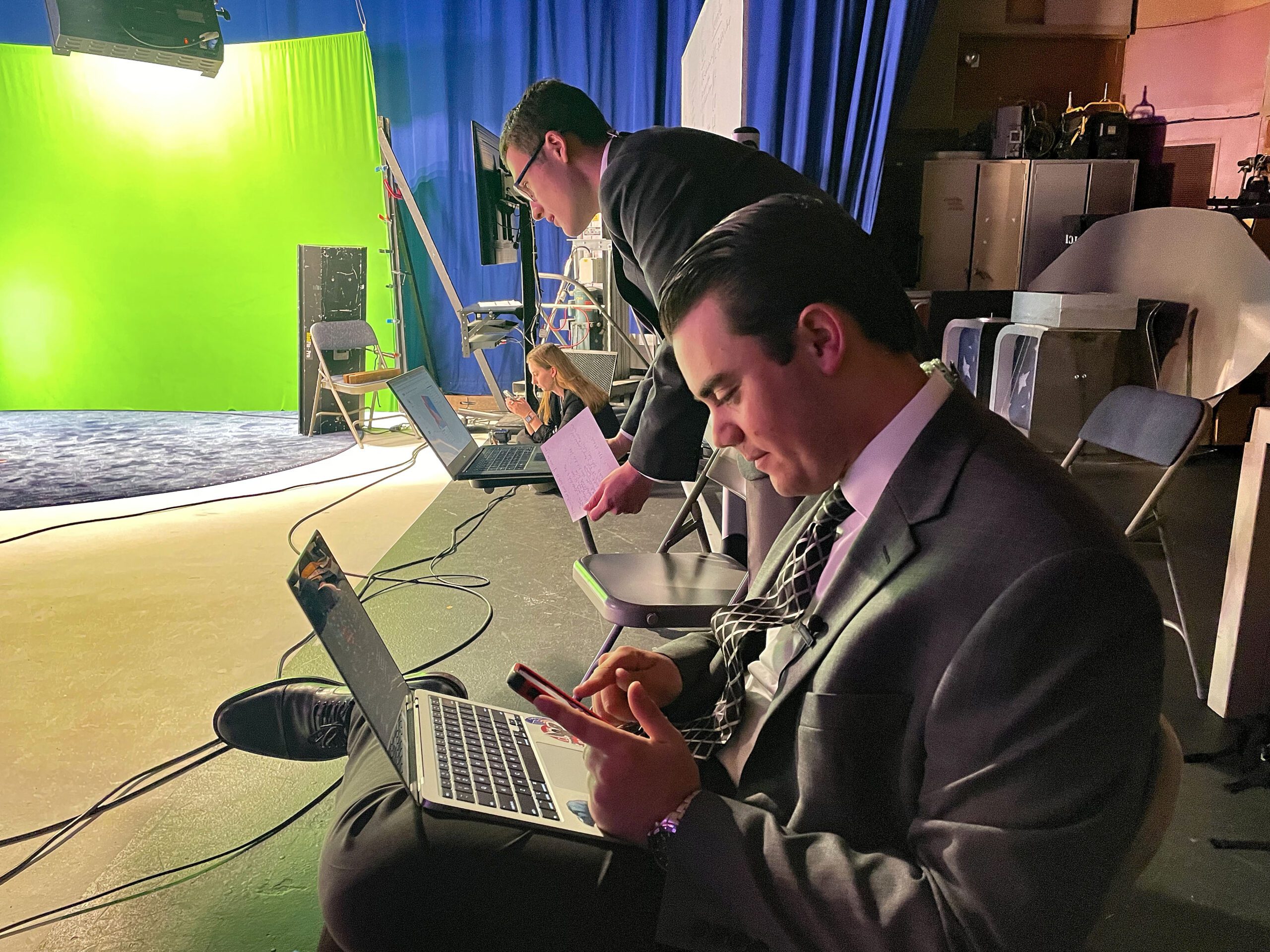
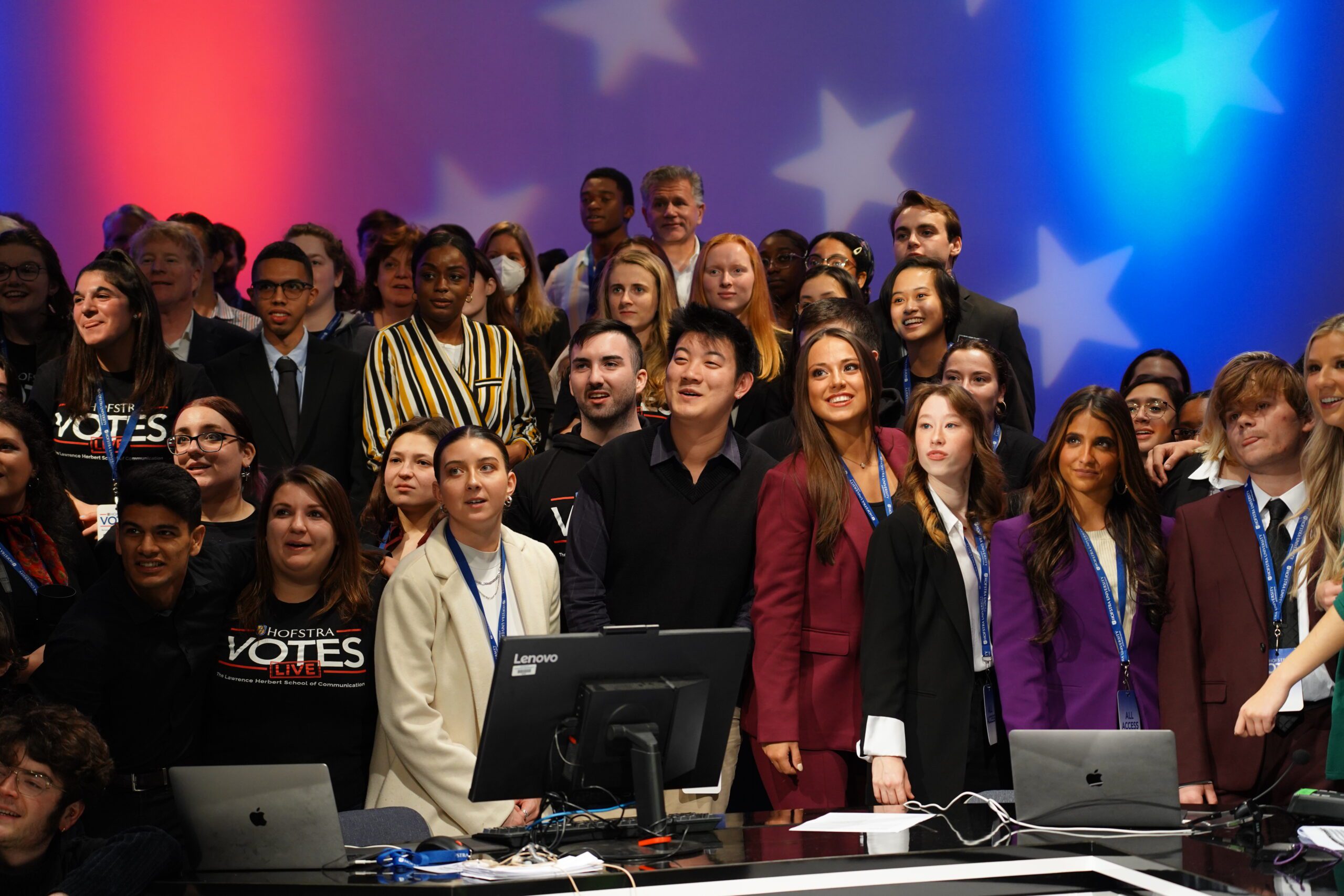

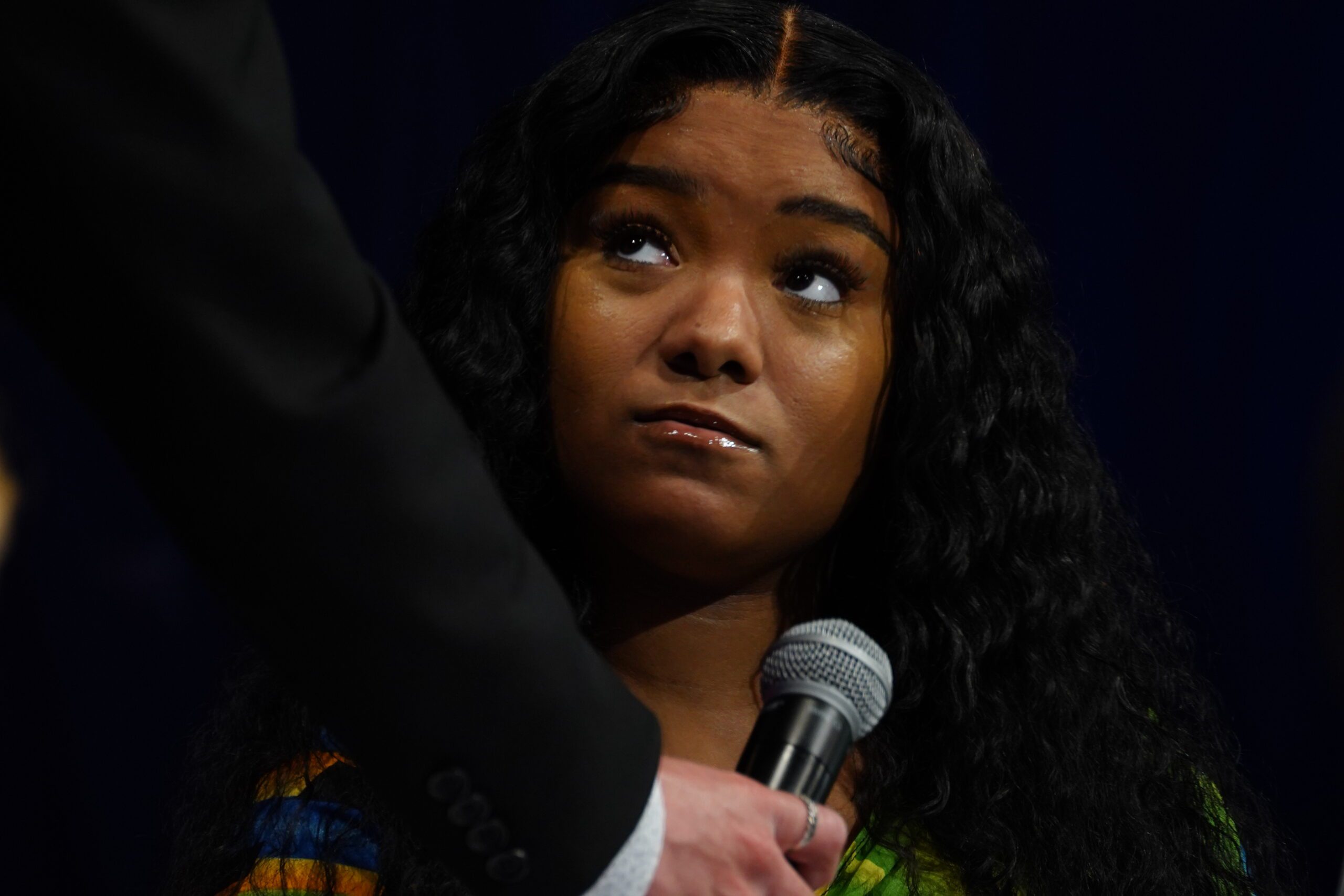
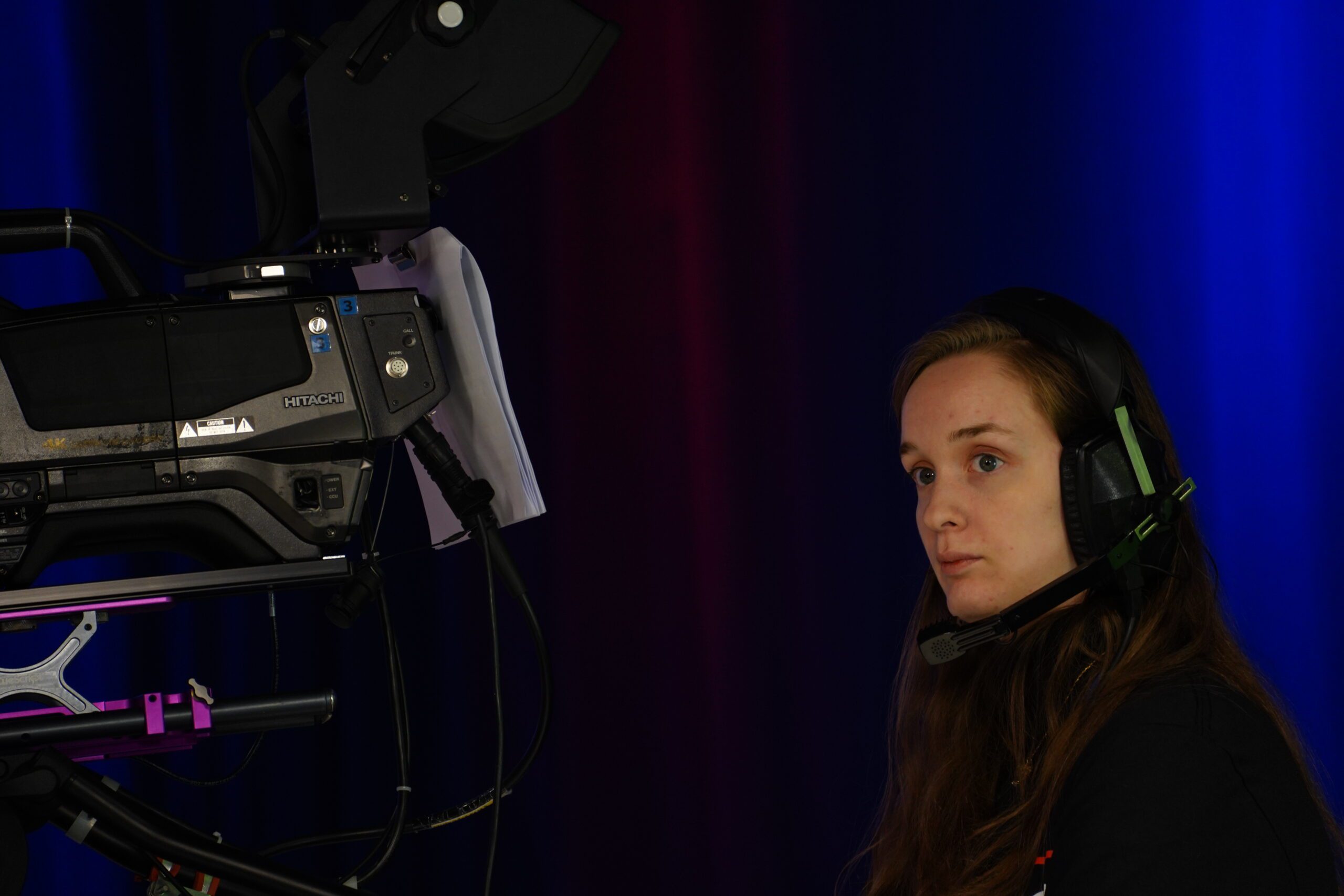
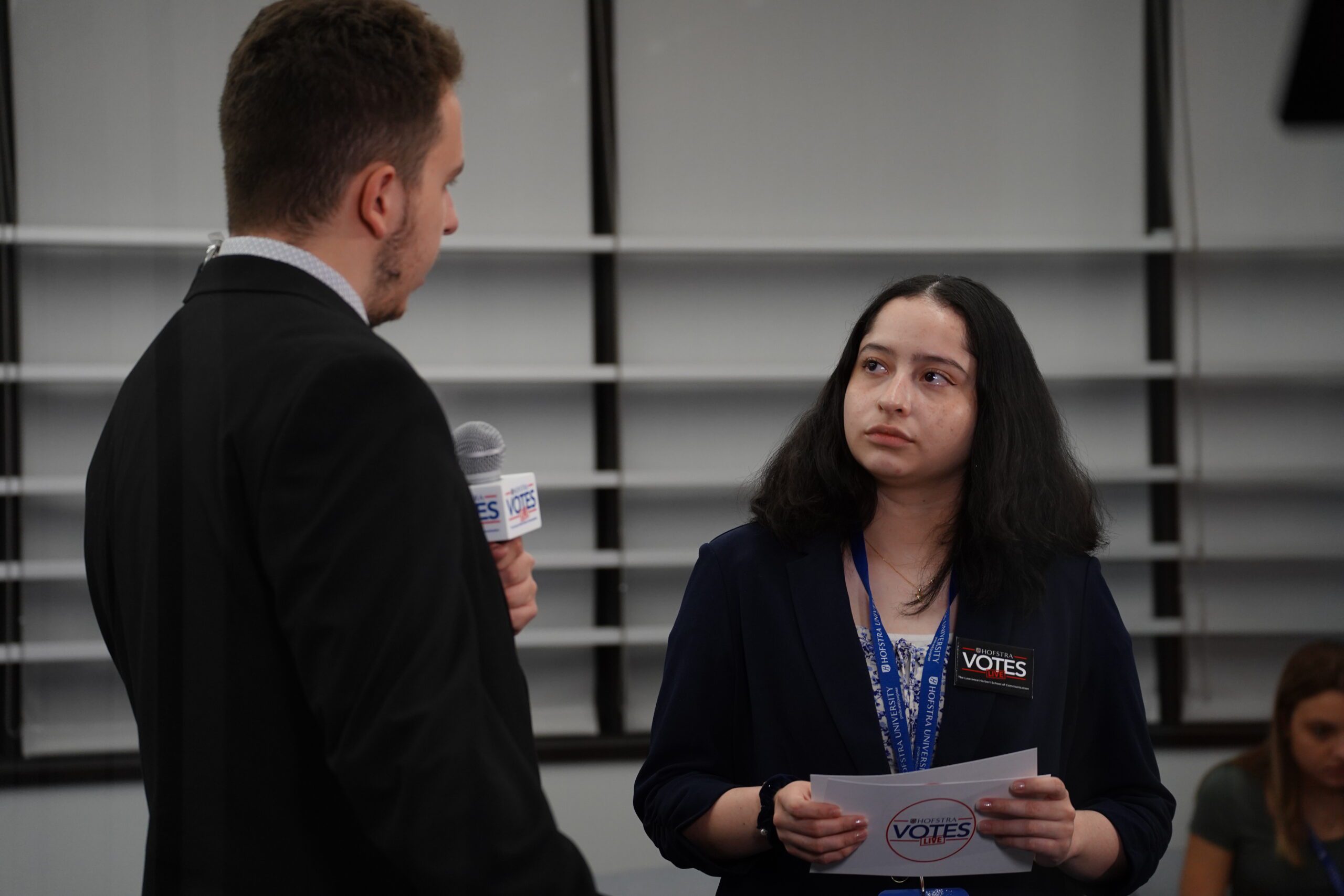
Professor Liz Burke, who has worked as a news and traffic reporter on Long Island and in the New York metropolitan area, mentored the anchors and reporters in their on-air delivery leading up to the broadcast. “The students acquired important on-camera skills, such as anchoring with a teleprompter, ad-libbing breaking news, reporting on news stories and delivering live reports in the field,” she said. “It was a wonderful experience for me, as an educator, to guide them through this learning process, and I’m so proud of them.”
“Students learned what it’s like to be part of a team of hundreds that spends tens of thousands of collective hours preparing for, rehearsing and eventually broadcasting live the results of our nation’s democratic process.”
Professor Randall Hillebrand
Journalism Professor Scott Brinton worked with the Newsroom and Decision Desk teams to help prepare content for delivery on air, as well as coached them on the salient issues facing voters in 2022, including the economy, crime, abortion and the environment, in particular the climate crisis.
Patricia Szenher, the Lawrence Herbert School’s equipment room manager, helped the students develop graphics for the show.
Gabriella Marinelli, national line producer for “Hofstra Votes Live,” said she first got involved with “HVL” as a first-year student at the Herbert School, shadowing a line producer for the curtain raiser, or preview show, leading up to the election night simulcast. “I’m so proud of the outcome” of this year’s show, she said, “and I can tell that each student involved in this process has a bright future ahead of them. I’m thankful for everything that the Lawrence Herbert School of Communication has to offer for its students and the creative freedom it provides so we can learn about ourselves as pre-professionals in the industry while gaining professional experience.”
